Exploring the Best of Southern California's Native Plants
Southern California is known for its diverse and unique plant life, with a variety of native species found throughout the region. These plants have adapted to the area's Mediterranean climate, which features hot, dry summers and mild, wet winters. Native plants are an important part of Southern California's ecosystems and play a vital role in maintaining biodiversity, preventing erosion, and providing habitat for wildlife. Here are ten of the best native plants of Southern California, in no particular order.
 California Buckwheat
California Buckwheat
(Eriogonum fasciculatum):
California Buckwheat is a drought-tolerant shrub that is found throughout Southern California, particularly in chaparral and coastal sage scrub habitats. It has clusters of small white or pink flowers that bloom in the summer and fall, attracting a variety of pollinators such as bees and butterflies. This plant is also an important food source for wildlife, providing seeds and foliage for birds and small mammals.
 Black Sage
Black Sage
(Salvia mellifera):
Black sage is a low-growing shrub that is found in the coastal sage scrub habitat of Southern California. It has dark green leaves and produces clusters of small, purple flowers that bloom in the spring and summer. The flowers are attractive to bees and other pollinators, and the leaves are used by a variety of wildlife for food and shelter. Black sage is also an important plant for erosion control, as its extensive root system helps to stabilize the soil.
 California Lilac
California Lilac
(Ceanothus):
The California Lilac is a diverse group of shrubs and small trees that are found throughout Southern California. They have clusters of blue or white flowers that bloom in the spring and are attractive to a variety of pollinators. Many species of Ceanothus are also important food sources for wildlife, providing seeds and foliage for birds and mammals. These plants are often used in landscaping and are popular for their attractive flowers and foliage.
 Coast Live Oak
Coast Live Oak
(Quercus agrifolia):
The Coast Live Oak is a large, evergreen tree that is found in the coastal regions of Southern California. It has dark green leaves and produces acorns that are an important food source for a variety of wildlife, including deer and squirrels. The tree is also an important part of the ecosystem, providing habitat for birds and small mammals, as well as stabilizing the soil and preventing erosion.
 Desert Willow
Desert Willow
(Chilopsis linearis):
The Desert Willow is a small tree or shrub that is found in the desert regions of Southern California. It has long, narrow leaves and produces large, trumpet-shaped flowers that are pink or purple in color. These flowers are attractive to hummingbirds and other pollinators, and the tree is an important source of food and shelter for wildlife. This plant is also valued for its drought tolerance and attractive foliage, and is often used in landscaping.
 Engelmann Oak
Engelmann Oak
(Quercus engelmannii):
The Engelmann Oak is a large, evergreen tree that is found in the mountains and foothills of Southern California. It has dark green leaves and produces acorns that are an important food source for a variety of wildlife, including birds and small mammals. The tree is also an important part of the ecosystem, providing habitat for wildlife and helping to prevent erosion.
 Prickly Pear Cactus
Prickly Pear Cactus
(Opuntia):
This plant is a type of cactus that is found throughout Southern California, particularly in desert and chaparral habitats. It has thick, spiny pads and produces large, showy flowers that are yellow, red, or pink in color. The cactus is an important source of food and water for a variety of wildlife, including birds and small mammals, and is also valued for its drought tolerance and resilience in harsh environments.
 California Wild Rose
California Wild Rose
(Rosa californica):
The California Wild Rose is a shrub that is found throughout Southern California, particularly in riparian and coastal habitats. It has delicate pink or white flowers that bloom in the spring and summer and are attractive to a variety of pollinators. The rose hips, which are the fruit of the plant, are an important food source for birds and small mammals. This plant is also used in landscaping and is valued for its attractive flowers and foliage.
 Western Redbud
Western Redbud
(Cercis occidentalis):
The Western Redbud is a small tree or shrub that is found throughout Southern California, particularly in chaparral and oak woodland habitats. It has heart-shaped leaves and produces clusters of pink or purple flowers that bloom in the spring. The tree is an important source of food and shelter for wildlife, and is often used in landscaping for its attractive flowers and foliage.
 Yerba Santa
Yerba Santa
(Eriodictyon):
Yerba Santa is a shrub that is found throughout Southern California, particularly in chaparral and coastal sage scrub habitats. It has shiny, dark green leaves and produces clusters of small, white or pink flowers that bloom in the spring and summer. The plant is an important source of food and shelter for wildlife. The leaves of the plant are often used in traditional medicine to treat respiratory and digestive issues.
Southern California is home to a diverse and unique array of native plants, each with its own distinct characteristics and ecological role. These plants are an important part of the region's ecosystems and play a vital role in maintaining biodiversity, preventing erosion, and providing habitat for wildlife. By protecting and preserving these native plants, we can ensure the continued health and resilience of Southern California's natural environment.
Southern California is known for its diverse and unique plant life, with a variety of native species found throughout the region. These plants have adapted to the area's Mediterranean climate, which features hot, dry summers and mild, wet winters. Native plants are an important part of Southern California's ecosystems and play a vital role in maintaining biodiversity, preventing erosion, and providing habitat for wildlife. Here are ten of the best native plants of Southern California, in no particular order.
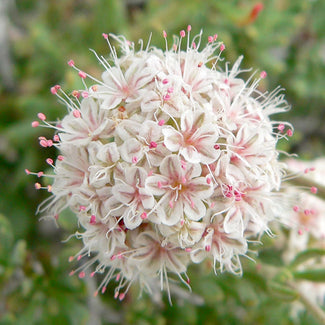
California Buckwheat (Eriogonum fasciculatum):
California Buckwheat is a drought-tolerant shrub that is found throughout Southern California, particularly in chaparral and coastal sage scrub habitats. It has clusters of small white or pink flowers that bloom in the summer and fall, attracting a variety of pollinators such as bees and butterflies. This plant is also an important food source for wildlife, providing seeds and foliage for birds and small mammals.
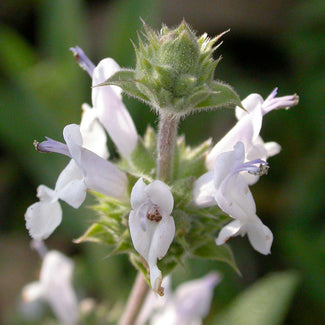
Black Sage (Salvia mellifera):
Black sage is a low-growing shrub that is found in the coastal sage scrub habitat of Southern California. It has dark green leaves and produces clusters of small, purple flowers that bloom in the spring and summer. The flowers are attractive to bees and other pollinators, and the leaves are used by a variety of wildlife for food and shelter. Black sage is also an important plant for erosion control, as its extensive root system helps to stabilize the soil.
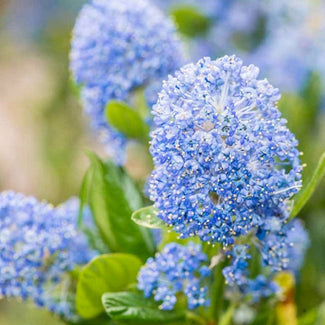
California Lilac (Ceanothus):
The California Lilac is a diverse group of shrubs and small trees that are found throughout Southern California. They have clusters of blue or white flowers that bloom in the spring and are attractive to a variety of pollinators. Many species of Ceanothus are also important food sources for wildlife, providing seeds and foliage for birds and mammals. These plants are often used in landscaping and are popular for their attractive flowers and foliage.

Coast Live Oak (Quercus agrifolia):
The Coast Live Oak is a large, evergreen tree that is found in the coastal regions of Southern California. It has dark green leaves and produces acorns that are an important food source for a variety of wildlife, including deer and squirrels. The tree is also an important part of the ecosystem, providing habitat for birds and small mammals, as well as stabilizing the soil and preventing erosion.
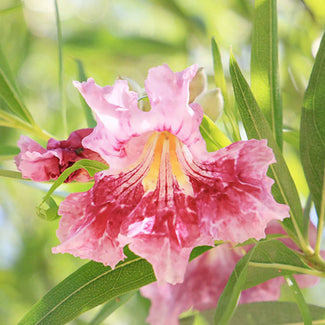
Desert Willow (Chilopsis linearis):
The Desert Willow is a small tree or shrub that is found in the desert regions of Southern California. It has long, narrow leaves and produces large, trumpet-shaped flowers that are pink or purple in color. These flowers are attractive to hummingbirds and other pollinators, and the tree is an important source of food and shelter for wildlife. This plant is also valued for its drought tolerance and attractive foliage, and is often used in landscaping.

Engelmann Oak (Quercus engelmannii):
The Engelmann Oak is a large, evergreen tree that is found in the mountains and foothills of Southern California. It has dark green leaves and produces acorns that are an important food source for a variety of wildlife, including birds and small mammals. The tree is also an important part of the ecosystem, providing habitat for wildlife and helping to prevent erosion.

Prickly Pear Cactus (Opuntia):
This plant is a type of cactus that is found throughout Southern California, particularly in desert and chaparral habitats. It has thick, spiny pads and produces large, showy flowers that are yellow, red, or pink in color. The cactus is an important source of food and water for a variety of wildlife, including birds and small mammals, and is also valued for its drought tolerance and resilience in harsh environments.
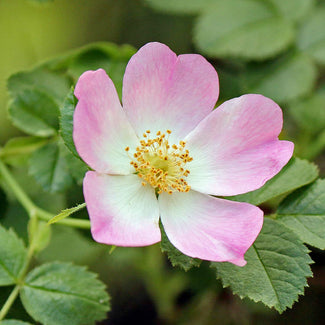
California Wild Rose (Rosa californica):
The California Wild Rose is a shrub that is found throughout Southern California, particularly in riparian and coastal habitats. It has delicate pink or white flowers that bloom in the spring and summer and are attractive to a variety of pollinators. The rose hips, which are the fruit of the plant, are an important food source for birds and small mammals. This plant is also used in landscaping and is valued for its attractive flowers and foliage.

Western Redbud (Cercis occidentalis):
The Western Redbud is a small tree or shrub that is found throughout Southern California, particularly in chaparral and oak woodland habitats. It has heart-shaped leaves and produces clusters of pink or purple flowers that bloom in the spring. The tree is an important source of food and shelter for wildlife, and is often used in landscaping for its attractive flowers and foliage.
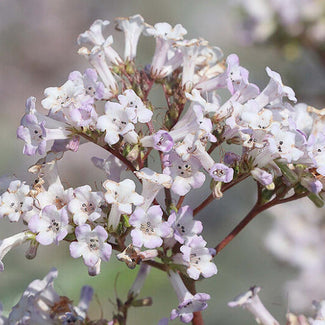
Yerba Santa (Eriodictyon):
Yerba Santa is a shrub that is found throughout Southern California, particularly in chaparral and coastal sage scrub habitats. It has shiny, dark green leaves and produces clusters of small, white or pink flowers that bloom in the spring and summer. The plant is an important source of food and shelter for wildlife. The leaves of the plant are often used in traditional medicine to treat respiratory and digestive issues.
Southern California is home to a diverse and unique array of native plants, each with its own distinct characteristics and ecological role. These plants are an important part of the region's ecosystems and play a vital role in maintaining biodiversity, preventing erosion, and providing habitat for wildlife. By protecting and preserving these native plants, we can ensure the continued health and resilience of Southern California's natural environment.